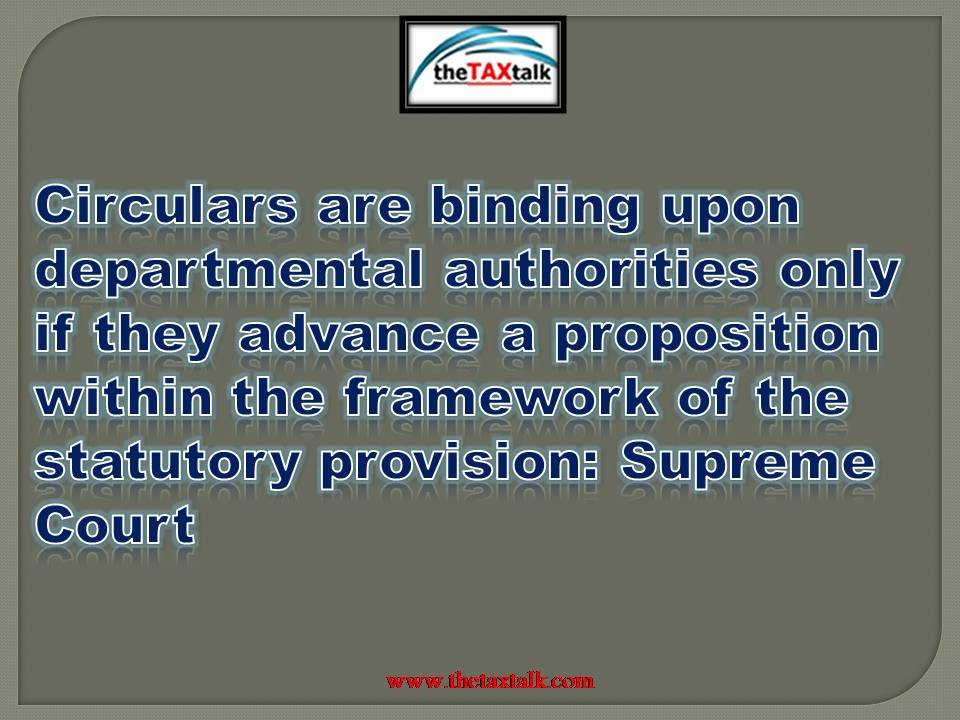![]()
Circulars are binding upon departmental authorities only if they advance a proposition within the framework of the statutory provision: Supreme Court
So far, it was a well-established & settled proposition of the law that the circulars issued by the CBDT do not bind assessees but bind the department. Assessee has the right to challenge the correctness of a circular before a quasi-judicial authority constituted under the relevant statute.
The Supreme Court has time and again held that circulars issued by the Board are binding in law on all tax authorities and assessees can rely on them for securing whatever relief they are entitled to under the circular. This has been held in Navnit Lal C. Javeri v. KK Sen, AAC of IT (56 ITR 198); Ellerman Lines Ltd. v. CIT (82 ITR 913) and KP Varghese v. ITO (131 ITR 597). In Hindustan Aeronautics Ltd. v. CIT (243 ITR 808), the Supreme Court reiterated the point that circulars or instructions given by the Board are no doubt binding in law on the authorities under the Act.
A Full Bench of the Apex court in the case of Uco Bank has considered the effect of a certain circular issued under Section 119 of the Income Tax Act, 1961 exempting from income the interest payable on ‘sticky loans’, whose recovery is doubtful and has not been included in the profit and loss account of the assessee. It observed as under:
‘Such instructions may be by way of relaxation of any of the provisions of the sections specified there or otherwise. The Board thus has power, inter alia, to tone down the rigour of the law and ensure a fair enforcement of its provisions, by issuing circulars in exercise of its statutory powers under Section 119 of the Income-tax Act which are binding on the authorities in the administration of the Act. Under Section 119(2)(a), however, the circulars as contemplated therein cannot be adverse to the assesses.’
However, recently, the Apex court in the case of Ahmedabad Urban Trust case has observed as under:
“That circulars are per se not binding upon courts, in regard to interpretation of a statutory provision and, at best are guides or aid to interpretation for departmental authorities, who are bound to take them into account, was pithily stated in Keshavji Ravji & Co. and Ors. v. Commissioner of Income Tax 113 where the court observed as follows:
- In the opinion of this court, the views expressed in Keshavji Ravji, Indian Oil Corporation and Ratan Melting and Wire Industries (though the last decision does not cite Navnit Lal Jhaveri), reflect the correct position, i.e., that circulars are binding upon departmental authorities, if they advance a proposition within the framework of the statutory provision. However, if they are contrary to the plain words of a statute, they are not binding. Furthermore, they cannot bind the courts, which have to independently interpret the statute, in their own terms. At best, in such a task, they may be considered as departmental understanding on the subject and have limited persuasive value. At the highest, they are binding on tax administrators and authorities, if they accord with and are not at odds with the statute; at the worst, if they cut down the plain meaning of a statute, or fly on the face of their express terms, they are to be ignored.”
With above proposition, the well settled law that circular are binding on the department will no longer be an accepted principle.

